Exam Details
Exam Code
:JN0-647Exam Name
:Enterprise Routing and Switching, Professional (JNCIP-ENT)Certification
:Juniper CertificationsVendor
:JuniperTotal Questions
:75 Q&AsLast Updated
:Mar 29, 2025
Juniper Juniper Certifications JN0-647 Questions & Answers
-
Question 41:
Click the Exhibit button.

You are troubleshooting an OSPF adjacency issue between R1 and R2. What is the reason for the ExStart state shown in the exhibit?
A. R2 was elected as the designated router.
B. R1 was elected as the backup designated router.
C. R1 and R2 are using the same IP address.
D. The MTU is not the default on R1 and R2.
-
Question 42:
Click the Exhibit button.
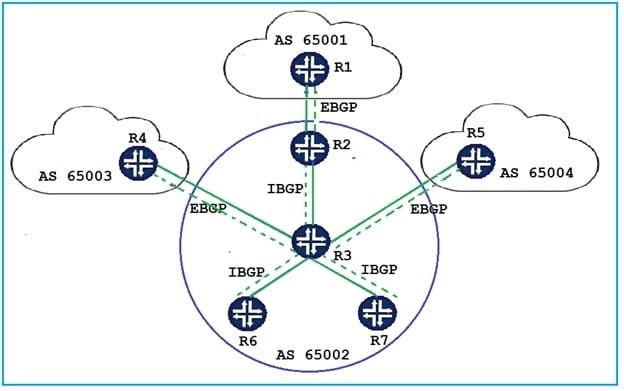
Router R1, in peer AS 65001, advertises routes to R2 using EBGP. R2 advertises the routes learned from R1 to R3 using IBGP.
Referring to the exhibit, to which routers will R3 advertise the BGP routes received from R2?
A. R6, R7
B. R4, R5, R6, R7
C. R4, R5
D. R2, R4, R5, R6, R7
-
Question 43:
Which three statements are true about strict-high priority queues? (Choose three.)
A. In systems that support strict-high and high priority queues, traffic in the strict-high queue is completely emptied, and then high priority queue traffic is processed.
B. In systems that support strict-high and high priority queues, traffic in these two priorities is processed in a round-robin fashion.
C. When a strict-high queue goes into negative credits, it will maintain a strict DSCP marking.
D. When a strict-high queue can never go into negative credits and will always transmit the traffic in the queue.
E. In systems that support multiple strict-high priority queues, traffic in the strict-high queue is processed in a round-robin fashion.
-
Question 44:
Click the Exhibit button.
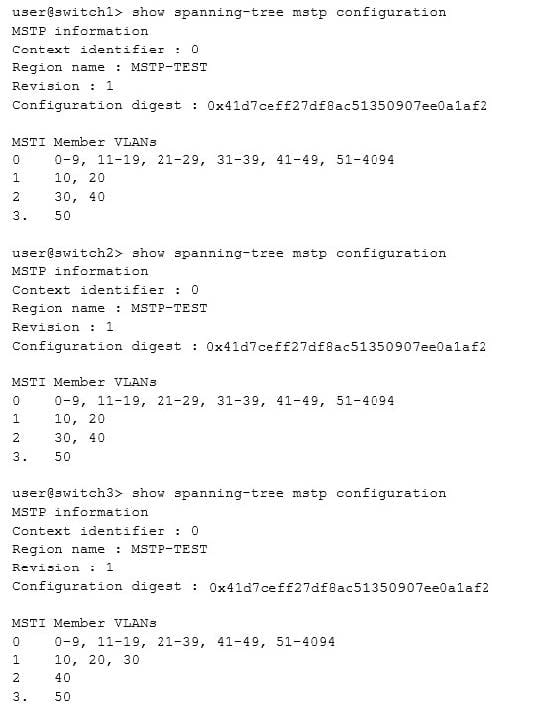
You have three switches, each with a trunk connection allowing all VLANs to the switches. CIST will converge, however MSTP will not.
Referring to the exhibit, which statement is correct?
A. Switch1 is the CIST root bridge.
B. Switch2 is the MSTI root bridge.
C. Switch3's contest identifier must be changed.
D. Switch3's configuration digest is different than for switch1 and for switch2.
-
Question 45:
OSFP is stuck in the ExStart state.
What is a common cause of this problem?
A. The DR priority is configured incorrectly.
B. MTUs do not match.
C. IP addresses are not configured correctly.
D. Jumbo frames are not enabled.
-
Question 46:
Click the Exhibit button.
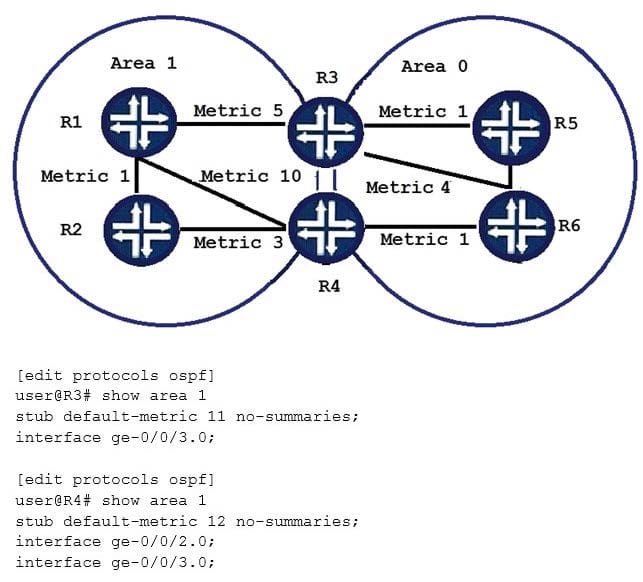
Referring to the exhibit, Area 1 is a stub area.
Which two statements are correct in this scenario? (Choose two.)
A. R2 will send traffic to unknown destinations using R1 or R4.
B. R1 will send traffic to unknown destinations using R3 or R4.
C. R1 will send traffic to unknown destinations using only R3.
D. R2 will send traffic to unknown destinations using only R4.
-
Question 47:
Click the Exhibit.
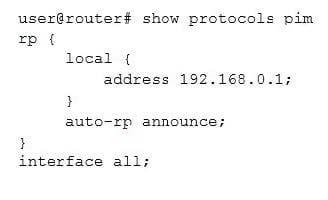
You are configuring dynamic rendezvous points for your PIM multicast domain. You have chosen to use auto-RP as the dynamic RP mechanism. You are not seeing the auto-RP announcements.
Referring to the exhibit, which two configurations will solve this problem? (Choose two.)
A. Configure the dense-groups for addresses 224.0.1.39 and 224.0.1.40.
B. Configure the interfaces for sparse-dense mode.
C. Configure the rp for the mapping function.
D. Configure the interfaces for sparse mode.
-
Question 48:
Click the Exhibit button.
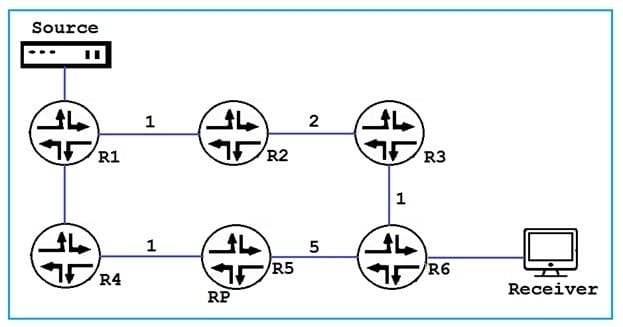
You have deployed Sparse Mode multicast in your network using the IGP metrics shown in the exhibit.
Which path will (*, G) traffic follow form the source to the receiver before the (S, G) state is registered?
A. Source, R1, R4, R5, R6, Receiver
B. Source, R1, R2, R5, R2, R3, R6 Receiver
C. Source, R1, R2, R3, R6, Receiver
D. Source, R1, R2, R5, R6, Receiver
-
Question 49:
Which two statements are true about OSPFv3? (Choose two.)
A. OSPFv3 packets are sent using local subnet addressing.
B. OSPFv3 packets are sent using link local addressing.
C. The authentication mechanisms in OSPFv3 are the same mechanisms used in OSPFv2.
D. The authentication mechanisms from OSPFv2 are not present in OSPFv3.
-
Question 50:
Computers on the network are assigned IP addresses from DHCP server based on the MAC address of the computer. The network administrator wants computes assigned to a VLAN using the computer's IP addresses, regardless of where the computers are plugged into the network.
In this scenario, which two statements are true? (Choose two.)
A. The MAC RADIUS feature can query a RADIUS server to dynamically assign a VLAN to a host based on its MAC address.
B. DHCP snooping can be enabled to determine with which VLAN a device should be associated when it receives an IP address.
C. 802.1X authentication can query the DHCP server to identify the VLAN that a device should be assigned.
D. 802.1X authentication can assign a VLAN to a device based on the user that is logged into the device.
Related Exams:
JN0-102
Internet Associate, Junos(JNCIA-Junos)JN0-104
Junos, Associate (JNCIA-Junos)JN0-105
Junos, Associate (JNCIA-Junos)JN0-1101
Juniper Networks Certified Design Associate (JNCDA)JN0-130
Juniper networks Certified internet specialist.e(jncis-e)JN0-1301
Data Center Design, Specialist (JNCDS-DC)JN0-1302
Data Center Design Specialist (JNCDS-DC)JN0-1331
Security Design, Specialist (JNCDS-SEC)JN0-1332
Security Design, Specialist (JNCDS-SEC)JN0-1361
Service Provider Design Specialist (JNCDS-SP)
Tips on How to Prepare for the Exams
Nowadays, the certification exams become more and more important and required by more and more enterprises when applying for a job. But how to prepare for the exam effectively? How to prepare for the exam in a short time with less efforts? How to get a ideal result and how to find the most reliable resources? Here on Vcedump.com, you will find all the answers. Vcedump.com provide not only Juniper exam questions, answers and explanations but also complete assistance on your exam preparation and certification application. If you are confused on your JN0-647 exam preparations and Juniper certification application, do not hesitate to visit our Vcedump.com to find your solutions here.